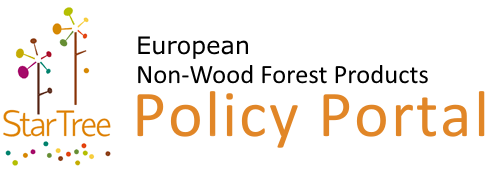Promoting traditional collection and use of wild plants to reduce social and economic disparities in Central Europe
Description
Brief description of the instrument and its modus operandi
Framework of the project presents five implementation regions* that contain demonstration installations aimed for training and presentation of information to a wider audience. // Improved employment options in rural areas with high unemployment will be presented through: a) evaluating natural resources for herb collection, b) providing guidelines for sustainable plant harvesting; processing and packing the herbs’ produce, c) giving know-hows on setting-up and running business of collection, processing and marketing (selling) products from endogenous herbs. Main tools that are being used to deliver the options from above are: a) multidimensional analysis of the regions and generating major partnerships; b) transnational model on market generation; c) a database of plants and regions; d) suggestions and methods on maintenance nation of traditions with plants use. // *http://www.traditionalandwild.eu/en/images/Studies/socio-economic%20analysis%20appendix.pdf
Which problem the instrument is supposed to solve?
Collecting plants and herbs requires certain degree of knowledge, as the collector needs to be able to identify herbs correctly, and also know where to find them. This knowledge was often passed down from generation to generation. // Today, and since the middle of the 20th century, due to urbanization, changes in land ownership and lifestyle this traditional knowledge is being lost. Plant collection that does take place is done in an unsustainable manner leading to the decline of a key employment for vulnerable groups as it is often an important source of additional income for the Roma ethnic minority, women and the elderly. // Central Europe used to be and still is among the main exporters of products originating from plants – e.g. medicinal and spice plants - to processors in Western Europe. In Europe it is estimated that about 2000 plants are traded commercially, of which 60-70% are natives. Up to 90% of these species are still collected from the wild.
Purpose or main objective / overall goal of the instrument?
To maintain and share the cultural heritage, and to improve the wellbeing of vulnerable groups of society in rural areas of the middle Europe. “The partnership wants to set up a capacity building strategy to revive regional cultural traditions on utilisation of plants to contribute towards strengthening of local communities.” The specific objective is to implement a pilot model by year 2014 that is socially and culturally acceptable, economically-sound and environmentally viable for the collection of wild plants, their processing and use.
Innovation content or potential of the instrument?
To improve employment possibilities for rural population in central Europe by improving the knowledge with know-hows on collection, processing and marketing and selling herb products.
Which laws and regulations support the implement of this instrument?
Not applicable.
The initiator/promoter of the instrument?
Third party: Local authorities, non-governmental development agencies, universities
Which organizations are involved in the operationalization of the instrument?
Project partners: a) WWF Hungary in cooperation with TRAFFIC b) Village Local Authority Kunadacs (HU) c) South-Transdanubian Regional Resource Centre Nonprofit LTD (HU) d) Association for Development and Promotion of Podkarpackie Voivodeship "PRO CARPATHI
How the monitoring is ensured?
The instrument is purely informational in its nature thus no monitoring or control is assumed.
How the compliance is ensured?
Not applicable.
How is the overall performance of the instrument?
The project is not finalized yet, so it results are still to be delivered. Nevertheless, several workshops for local residents were prepared – traditional use of herbs and business opportunities for products from herbs.
Brief description of the context for the emergence of the instrument
Wild plants present a potential source of income that has not been tapped to its full potential so far in many countries of the EU. The Common Agricultural Policy tries to enhance income diversification through economic incentives aimed at educating rural society on entrepreneurship and setting-up business activities. Nevertheless, CAP supports quite specific measures, which are not able to provide wide coverage of topics on herbs and business. Such ad hoc projects as Traditional&Wild could help in this.
Have any of the items mentioned above changed since the instrument entered into force?
Yes
Details
Attendance of project’s workshops for local people was very high, which is indicating significant interest in this topic.
What are the main reasons or drivers behind changes mentioned?
Interest of local people to generate some additional income or to diversify it.
Is there any qualitative or quantitative study of the impacts of the instrument?
No
| Instrument | |
| Year | May 2011-April 2014 The date "May 2011-April 2014" was not understood.
|
|---|---|
| Affected actors | Picker/harvester/hunter, Processor, Retailer |
| Products | Herbs/plants |
| Countries | Slovenia |
| Regions (NUTS 2) | Western Slovenia |
| Geographical scope | International |
